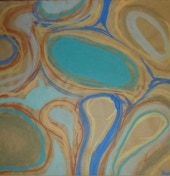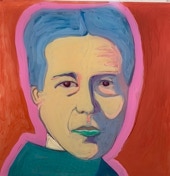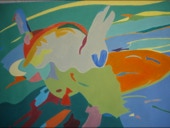Reflections
“Reflections on Water” is an experiment on how the visual experience can be deconstructed through body memory. Looking into the surface of water is experienced in relation to traditions encrypted in our body, capturing images and converting them into expressions conveying a sense of movement and rhythm. The process of painting has become for me a mixture of the deliberate intention of moving away from the real context and a synthesis of lines and colors in a spontaneous way. This abstract process is trying to capture the essence of the water without representing it.











































